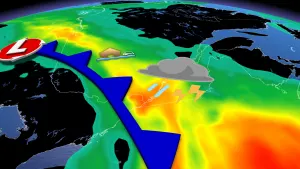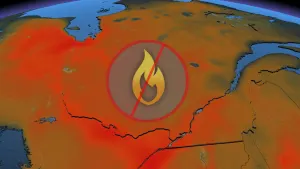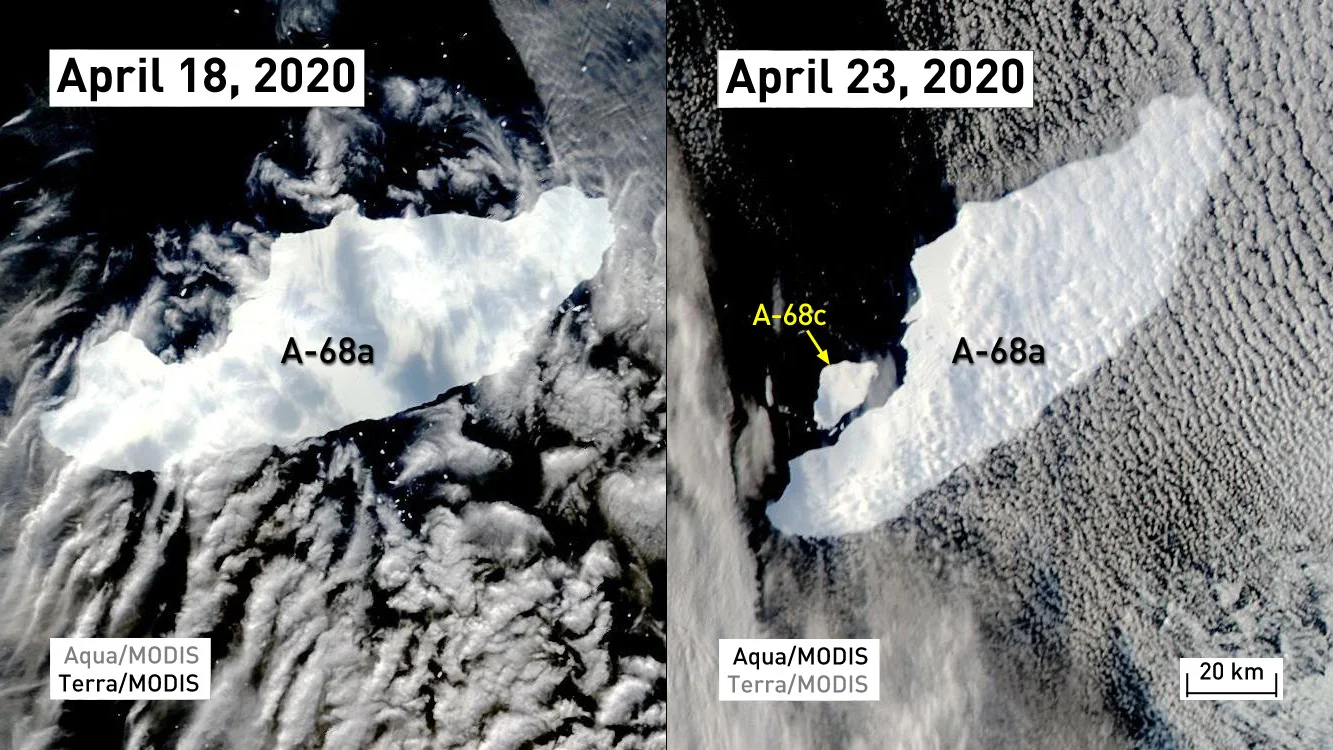
New satellite images reveal Iceberg A-68's days are numbered
With a sizeable chunk of A-68 breaking off in the past week, this heralds the end for this impressive iceberg
In July of 2017, one of the largest icebergs ever recorded broke away from Antarctica's Larsen C Ice Shelf. Now, nearly three years later, new imagery is showing that Iceberg A-68 won't likely be around for much longer.
When the Larsen C ice shelf lost over ten per cent of its mass in 2017, scientists began tracking the enormous chunk of ice that broke away from it. Named A-68, this iceberg initially had an area of over 5,800 square kilometres, making it larger than Prince Edward Island.
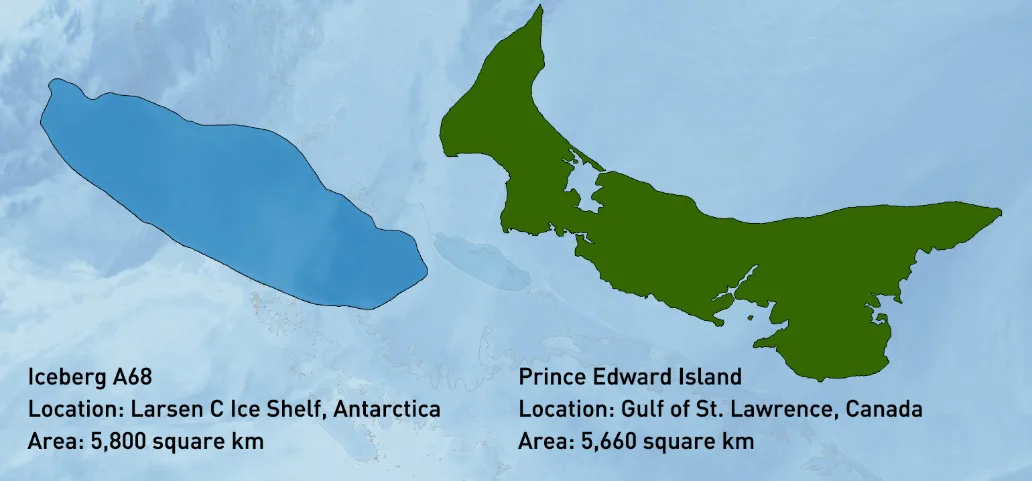
Comparison between Iceberg A-68 and Prince Edward Island, from July 12, 2017. Credit: NASA Worldview/Google/Scott Sutherland
An initial piece, dubbed A-68b, was lost shortly after the iceberg calved off the ice sheet. A-68a has remained relatively intact since then, even as it moved out into the Weddell Sea and eventually drifted north into open ocean waters.
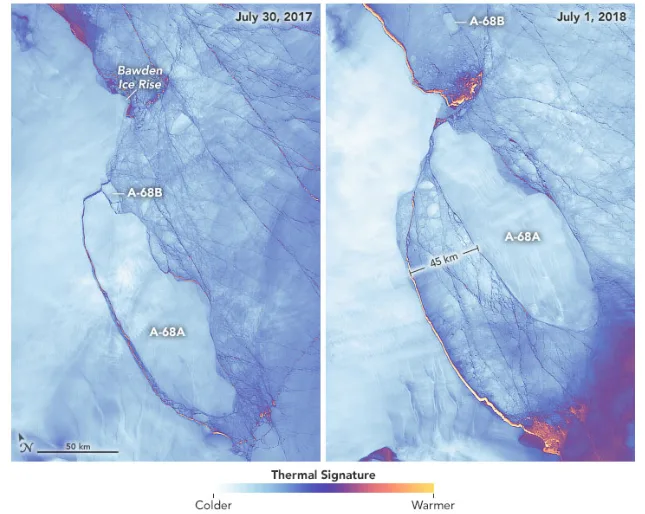
Icebergs A-68 a and b, on July 30, 2017, and July 1, 2018. Credit: NASA Earth Observatory
When it calved off the Larsen C ice shelf, A-68 was the largest iceberg on Earth at the time. This is a title it still holds today!
More massive icebergs have been spotted in the past, of course, but they eventually break apart and melt away. So, no one berg remains the largest currently on Earth for long.
Iceberg B-15 still stands the largest berg ever recorded by satellite. With an area of 11,000 square kilometres when it broke away from the Ross Ice Shelf in 2000, it fragmented into numerous smaller pieces in 2005. One of the final fragments, B-15z was photographed by astronauts onboard the International Space Station in 2018. As of 2020, only two pieces remained large enough to track. B-15aa - a direct remnant of B-15z - to the east of the island of South Georgia, in the south Atlantic Ocean. B-15ab remains among sea ice along the coast of Antarctica south of Africa.
A-68, although it is still the largest iceberg currently on Earth, ranks as the sixth-largest in the satellite era, according to Brigham Young University's Antarctic Iceberg Tracking Database.
BEGINNING OF THE END
The latest images captured from space now show that A-68a has lost another large chunk.
The likely-soon-to-be-named A-68c broke away from the main iceberg sometime between satellite passes on the 21st and 22nd of April.

Two unobstructed views of icebergs A-68a and newly-formed A-68c, from NASA's Terra satellite on April 18, and the Aqua satellite on April 23. Although the icebergs are visible on the days in between, they are partially obscured by clouds. Credit: NASA Worldview/Scott Sutherland
Measured at roughly 20 kilometres long, A-68c's 175 sq km area represents only a small portion of its parent's nearly 5,000 square kilometres.
As noted by Adrian Luckman, a satellite imaging glaciologist at Swansea University who specializes in the Larsen C ice shelf, that is still large enough to earn it a name.
As Luckman said in his April 23 Tweet, this may be the beginning of the end for Iceberg A-68.
"I am continually amazed that something so thin and fragile has lasted so long on the open sea," Luckman told BBC News. "I suspect that the final break-up is now starting, but the ensuing fragments will probably be with us for years."
When large icebergs first break off Antarctic glaciers and ice shelves, they tend to lose mass due to impacts, as local water currents smash them back into the ice shelf, into the coastline, or into other ice masses.
Once the iceberg makes it out into open ocean waters, however, it is typically the water itself that causes the most ice loss. As the 'berg drifts northward, progressively warmer waters weaken its somewhat fragile structure. This widens any cracks or fissures the berg picked up on its journey and creates new ones as the stresses mount. Eventually, the immense ice mass will break apart into multiple smaller pieces. These fragments will tend to be more resilient than the larger mass, meaning they will persist for some time amongst the sea ice surrounding the Antarctic continent.
Sources: Adrian Luckman | NASA Worldview | BBC News








